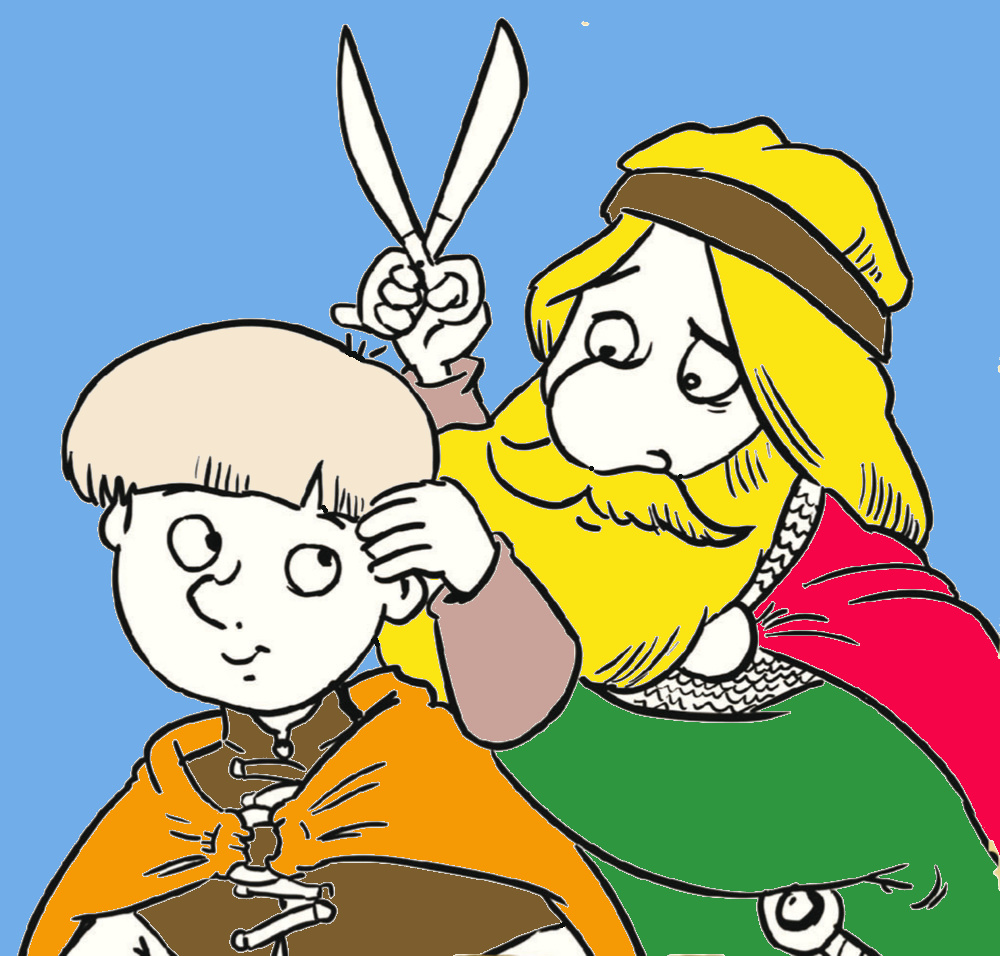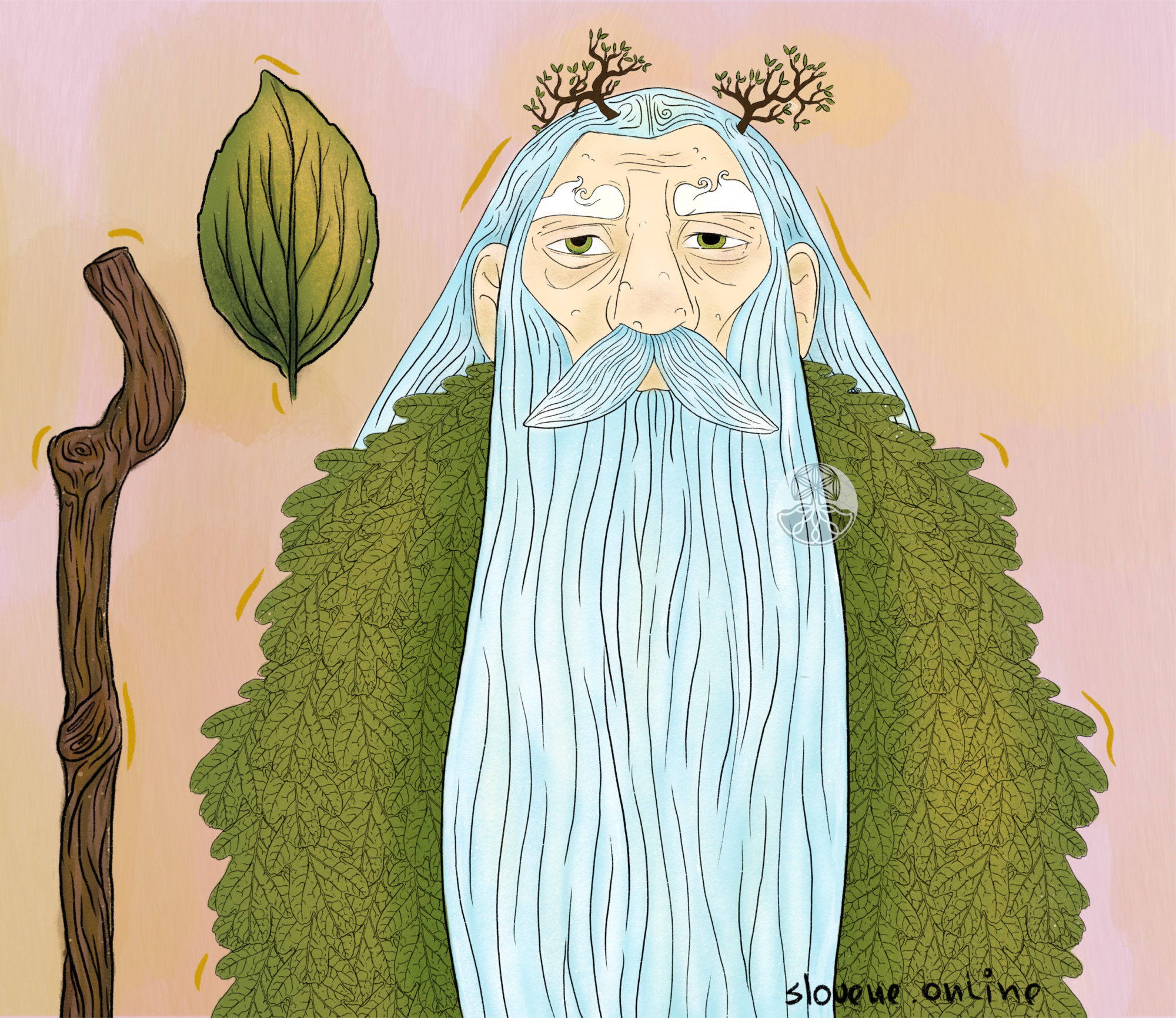During the postrizhiny ceremony Slovenians would hold the first cut hair high in their hand, Macedonians would place them in a sieve. In some Slavic regions locks of hair have to be destroyed or got rid of. For example, Slovaks, Belarusians and Ukrainians toss them into a fire or into a stove. Belarusians would say these words: “Valosiki gari, a galava ne bali” (Hair is on fire, but no headache). Sometimes the hair is thrown into the river or buried under a fruit tree. It is believed that the “ancestral” hair should not get to the birds. Slavs believe that if the birds weave that hair into the nest, the child will suffer from headaches.
ꏍ
In some other Slavic traditions, it was forbidden to destroy the trimmed hair. The first cut locks were kept by the Serbs in the house, in a special box with beeswax, Russians kept them in a flour sieve, Bulgarians – under a child’s pillow.
ꏍ
Actions with cut locks could depend on the gender of the child. Belarusians could put the boy’s hair in a barn for oxen, and Bulgarians buried it under a pear tree. The first hair locks of girls in Belarus were also thrown into a loom, and in Bulgaria and the Brest region they were buried under a willow, apple tree, cherry tree, or under a rose bush.
ꏍ
Do you know what was done with your first cut hair?
ꏍ
More interesting facts can be found in: “Slavic Antiquities” – encyclopedic dictionary in 5 volumes by Institute for Slavic Studies of the Russian Academy of Sciences.
Artist: Magdalena Szynkarczuk https://facebook.com/MagdalenaSzynkarczukArt
ꏍ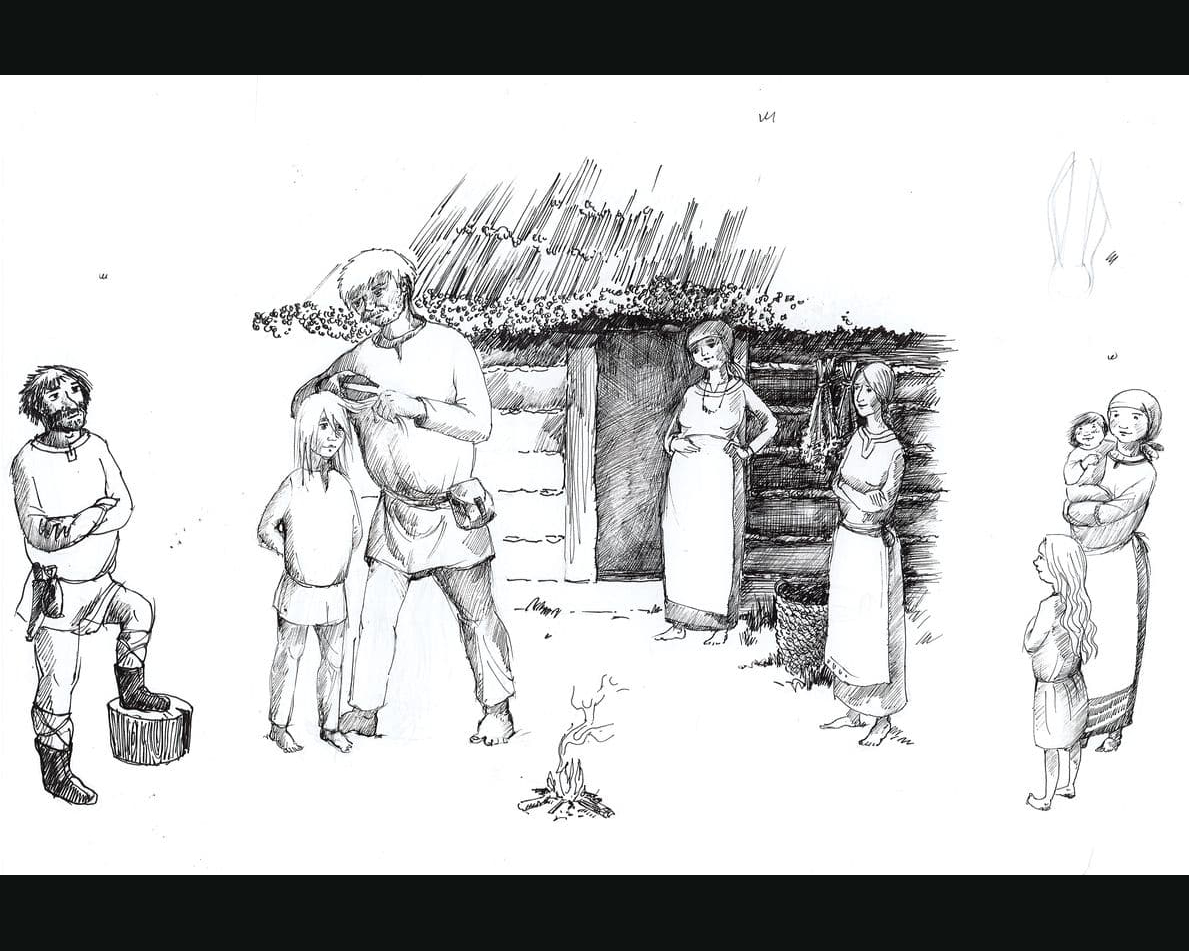
Caroling (kolyada) is an old Slavic ritual
Caroling (kolyada, koleda) is an old Slavic ritual timed to the period after winter solstice and before the new year. A group of participants visits neighboring houses, performs songs and chants good wishes addressed to the owners of each house – for which they receive various gifts.
ꏍ
In the Eastern Slavic calendar rituals, such as Kolyada and Maslennitsa, there is always a character dressed like a goat or with a goat mask. The attributes of the masked goat are usually a fur coat turned inside out, a wooden head with horns, a straw (or vine) beard and sometimes a moving lower jaw.
ꏍ
The goat in Slavic tradition is a symbol and stimulator of fertility. At the same time, it is considered an animal of demonic nature; acts as a representation of evil spirits and at the same time as a guardian from them.
ꏍ
The core of the eastern Slavic new year ritual of “walking a goat” is a song with a chorus “Oh-ho, goat”, where a story of the future harvest is told in “exaggerated manner” (“where the goat walks, it will give birth there”, “where the goat has a horn, there is a harvest “,” where a goat has a tail, there is bread “and the like). The song is accompanied by a dance, the central moment of which is the “dying” and “resurrection” of the Goat, which symbolizes the cycle of time and the rebirth of nature.
ꏍ
Source: “Slavic mythology. Encyclopedic Dictionary “, 2019 // Institute of Slavic Studies of the Russian Academy of Sciences
ꏍ
Drawing by L. S. Lenchevsky and T. N. Safonovsky to the ethnographic description of the “Goat” ritual in 1926 (the village of Kuncha, Ukraine). The caption under the picture lists the characters: 1) Straw grandfather, 2) Goat, 3) Judge, 4) Turk, 5) Cossack, 6) Doctor, 7) Gypsy, 8) Woman with a child
ꏍ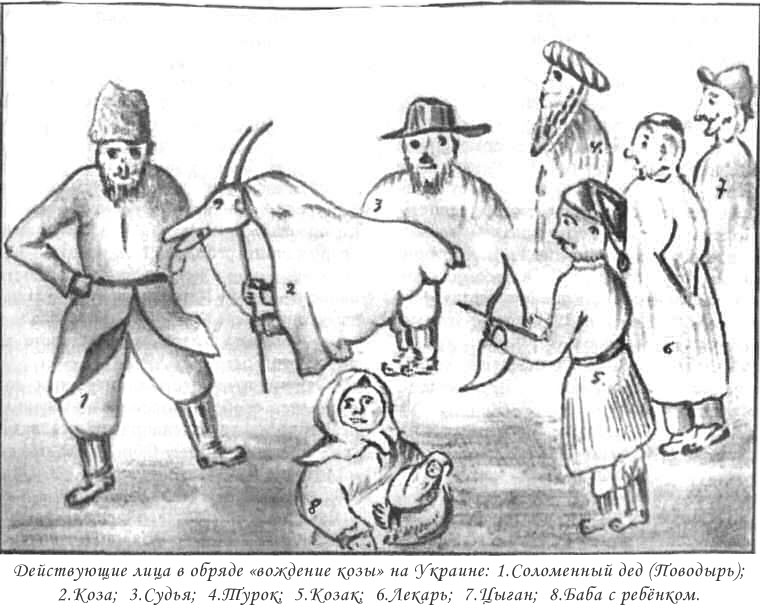
Karachun in Slavic tradition
KARACHUN (корочун, керечун, kračún, kračun, kraczun) in Slavic tradition. Karachun for Ukrainians, Poles, Slovaks, Moravians, Bulgarians, and Serbs – represents the winter solstice and the time period just before the new year, as well as a special bread and a tree, timed to this period of the year.
ꏍ
In the Russian and Belarusian languages, the word «karachun» also meant a sudden death, death at a young age, deathbed seizures, as well as an evil spirit or a demon that shortens life.
ꏍ
A common element of all these meanings is ‘a turn, a significant change in state’, represented in the names of the days of the winter and summer solstice, which are the border of winter and summer; in the description of death and the borderline state between life and death; in the names of evil spirits that cause death, especially premature death.
ꏍ
Also, krachun – is a special bread, known in the Carpathian region (among the Ukrainians, Ruthenians, Poles, Slovaks and Moravians). Krachun is considered a symbol of family wealth and has a special ceremonial and magical value. In Ukraine, wives and mothers used to bake it while dressed in an inside-out fur coat and in mittens. According to tradition, people usually put grains of various cereals, garlic, herbs in the middle of the bread, stuck a stalk of oats or a fir twig, they also tied krachun with a string of flax or hemp – all with a special purpose and a wish for wealth and good harvest.
ꏍ
In Slovakia, the krachun was divided between family members, given to house animals for good health and fertility, and the remainder was laid in front of the barn door for protection against witches. A piece of krachun and everything “baked” in it (people would put things inside on purpose) was used as medicine, amulets and powerful magical objects. Slavs also used krachun in divination by rolling it on the floor: if it rolled over onto the top crust, it meant misfortune in cattle breeding or the death of one of the family members. In Ukraine, people also used krachun for foretelling by looking at the shape it would take in the oven.
ꏍ
Have you come across these Slavic rites?
ꏍ
Source: Bogatyrev P.G. “Questions of the theory of folk art” 1971
Artist: Victor Korolkov “Karachun”
ꏍ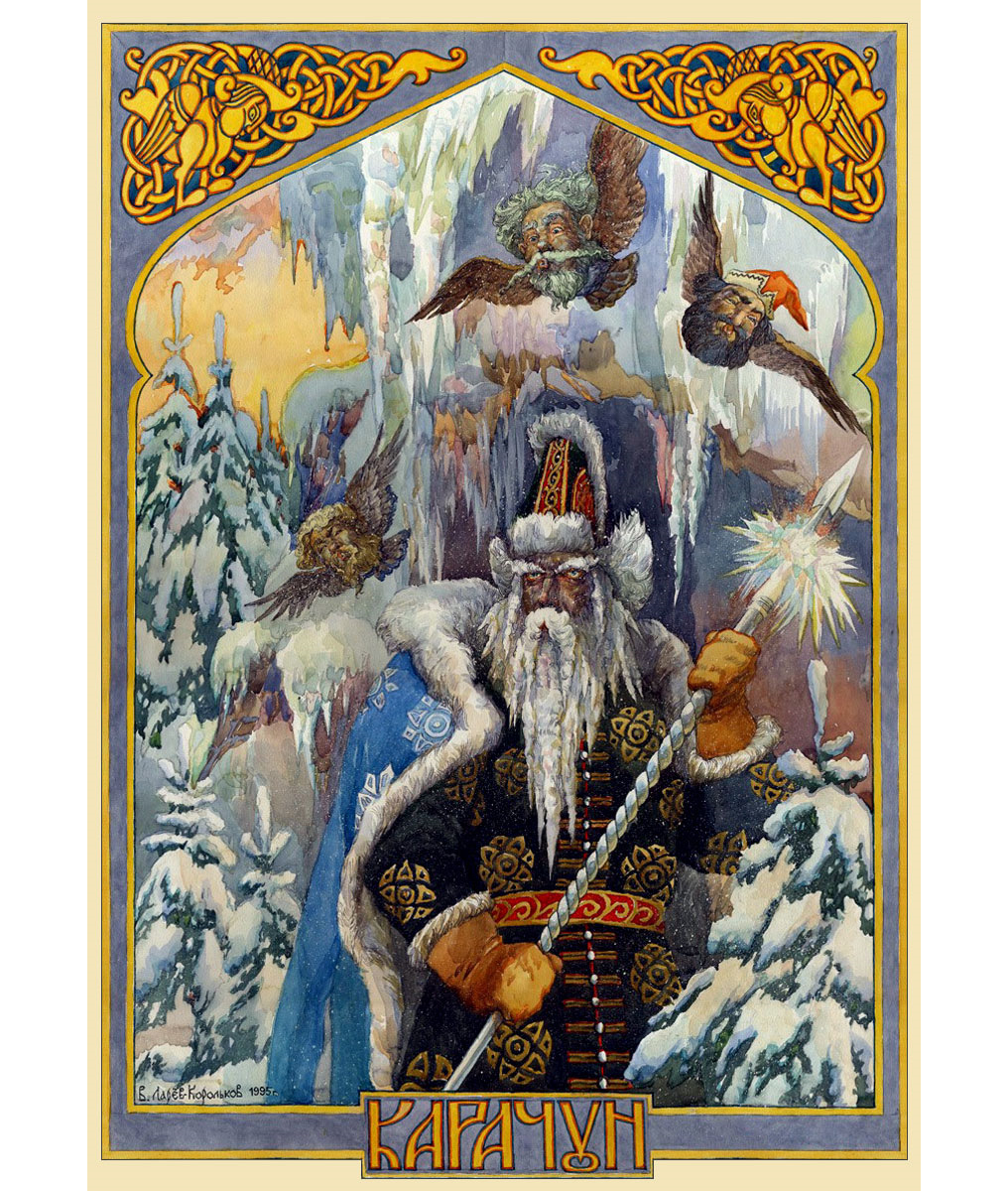
Postrizhiny among the Slavs: kinship, gifts and a feast
Among the southern Slavs, postrizhiny was an act of establishing kinship. In Serbia, the one who cut a child’s hair became his “postrizhiny father” (“шишано кумство”), in Bulgaria – the child’s brother. In Bosnia, if two families were in a quarrel, a member of the warring family was specially invited to cut the child’s hair, after which both sides would call truce. Such kinship was valued above blood or spiritual relationship.
ꏍ
The parents thanked the hair cutters. The Serbs gave them a shirt or weapons. Among the southern Slavs and Ukrainians, all the guests brought treats and gifts: pies, bread, salt, clothes for the child. Giving a gift to the child, to the one who cut the hair and to relatives and guests was considered mandatory. Among different Slavic nations, a “postrizhiny father” could give a child clothes and shoes, a red hat, a beehive, a sheep or other domestic animal. The child received gifts from his maternal grandfather and grandmother and from other relatives.
ꏍ
Postrizhiny celebration feast had different forms: from an ordinary family dinner to a rich ceremonial meal similar to a wedding, with the invitation of musicians and dances.
ꏍ
What other children related holidays do you know?
ꏍ
To be continued…
Artist: https://www.deviantart.com/mirogniewa
ꏍ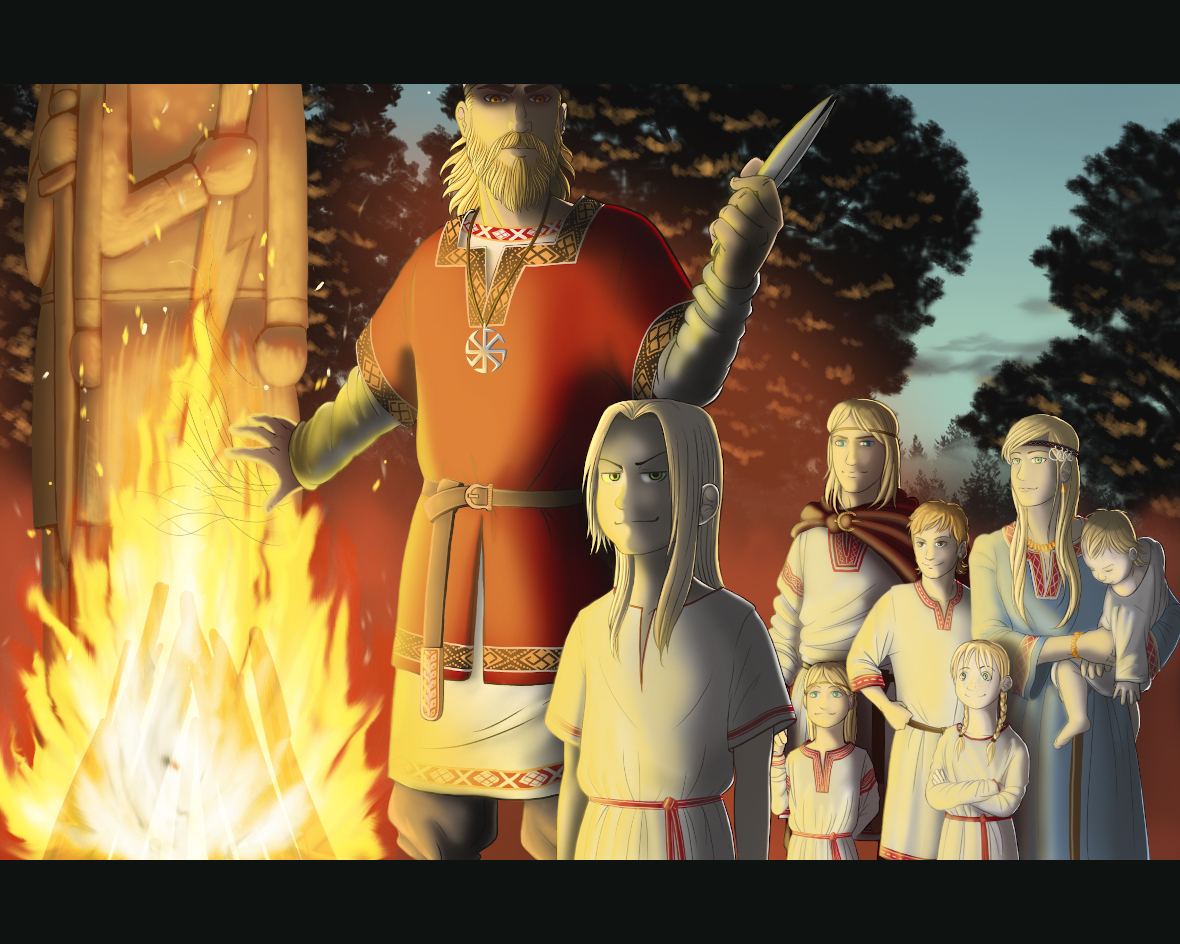
Postrizhiny – Slavic ritual
Postrizhiny in early childhood were common among all Slavs. The ceremony mainly extended only to boys, but sometimes to children of both genders – and was supposed to provide the child with good development, a happy fate, timely marriage, wealth, etc.
ꏍ
Most often, postrizhiny were done at home by the fireplace with a child sited on a table. The Eastern Slavs could also put child on a bench in the “red corner”. In Bulgaria, the child would be standing on dezha (special wooden tub for sourdough bread making) facing east. Ukrainians would sit the child on the fur coat. A spinning wheel, a comb, threads were put under the fur coat when cutting a girl’s hair, and when cutting a boy’s – a knife, a jointer, scissors, thereby wishing the child to acquire professional skills.
ꏍ
The method of cutting the first hair strands and the accompanying magical practices differ in various Slavic traditions. For example, among the Bulgarians, the one who cut the hair, washed the face of the child with water from a new jug, then “cut” the air with scissors and said (literally “glorified” – a verb derived from “slava”): “So that you grow old and gray, like Stara Planina (Balkan Mountains) and like your grandfather in old age”.
ꏍ
What rituals associated with the first haircut of children do you know?
ꏍ
To be continued…
ꏍ